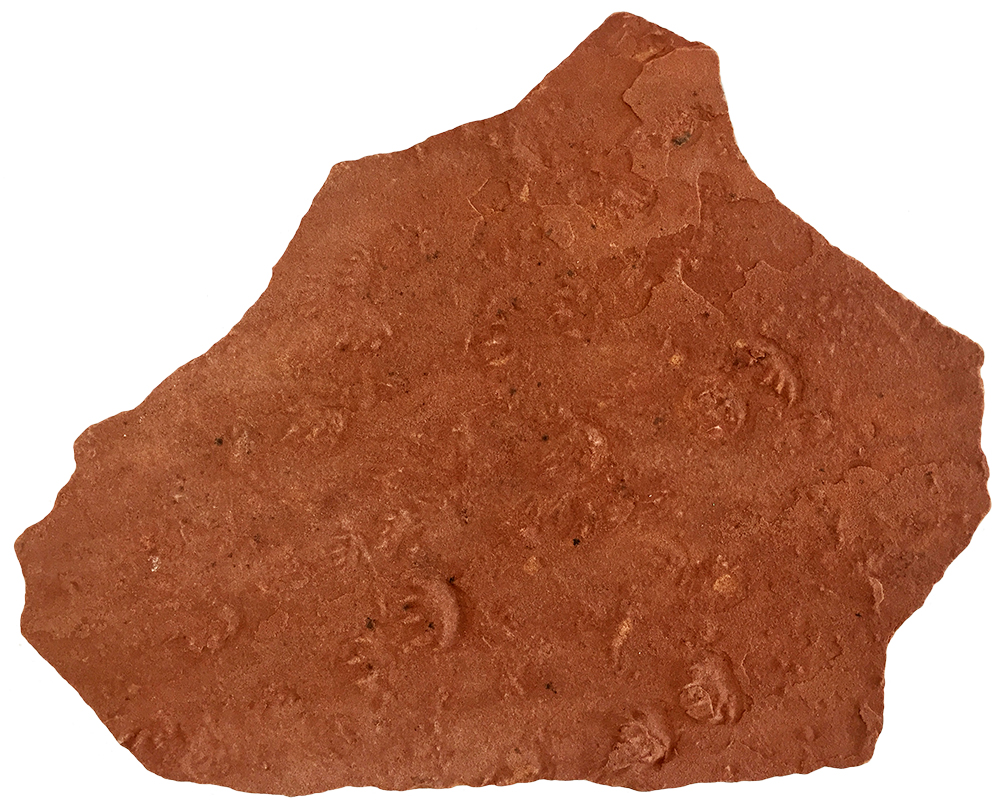
Permian - Coconino Sandstone, Arizona
Small animals scampered across desert sands 300 million years ago to leave these tracks behind. As it is seldom possible to identify which animal actually made a track, tracks have their own naming system distinct from that of the track makers. Chelichnus duncani tracks were left by a small animal that walked on four limbs with a sprawled five-toed stance. Originally discovered and described from quarries in Scotland, nearly identical tracks are common in sandstone layers of North America’s Grand Canyon. In both locations, as well as most other Chelichnus localities, these tracks occur in what were originally windblown dune sands that date to the middle of the Permian, roughly 275 million years ago.
Chelichnus tracks were first described around 1820 by Henry Duncan, although at the time no one had any idea what animal left them. In 1824, William Buckland not only described Megalosaurus, the first dinosaur recognized by western science, but also claimed to have identified the maker of Chelichnus. Awaking his wife, Mary Buckland, who was an accomplished scientific illustrator, he said he had just realized Chelichnus tracks were probably tortoise tracks. Deciding to test the concept, Mary and William covered the kitchen table with flour paste and brought in their garden tortoise to wander across the table, leaving tracks very similar to the fossil footprints. This story spread and Richard Owen, in the same 1842 publication in which he coined the term ‘dinosaur’, formally identified the tracks as Testudo duncani in honor of Henry Duncan. However, as Testudo was the name for a tortoise genus and the tracks were not tortoises, the name was changed to Chelichnus duncani, meaning 'Duncan's chelonian footprints' (Chelonia being another name for the order that includes turtles, terrapins, and tortoises).
One significant problem remained though. Despite the Bucklands’ early morning kitchen experiment, tortoises had not yet evolved by the Permian, only arising in the Triassic. So Chelichnus could not be tortoise tracks. We now suspect they were made by a proto-mammal, one of our distant ancestors.